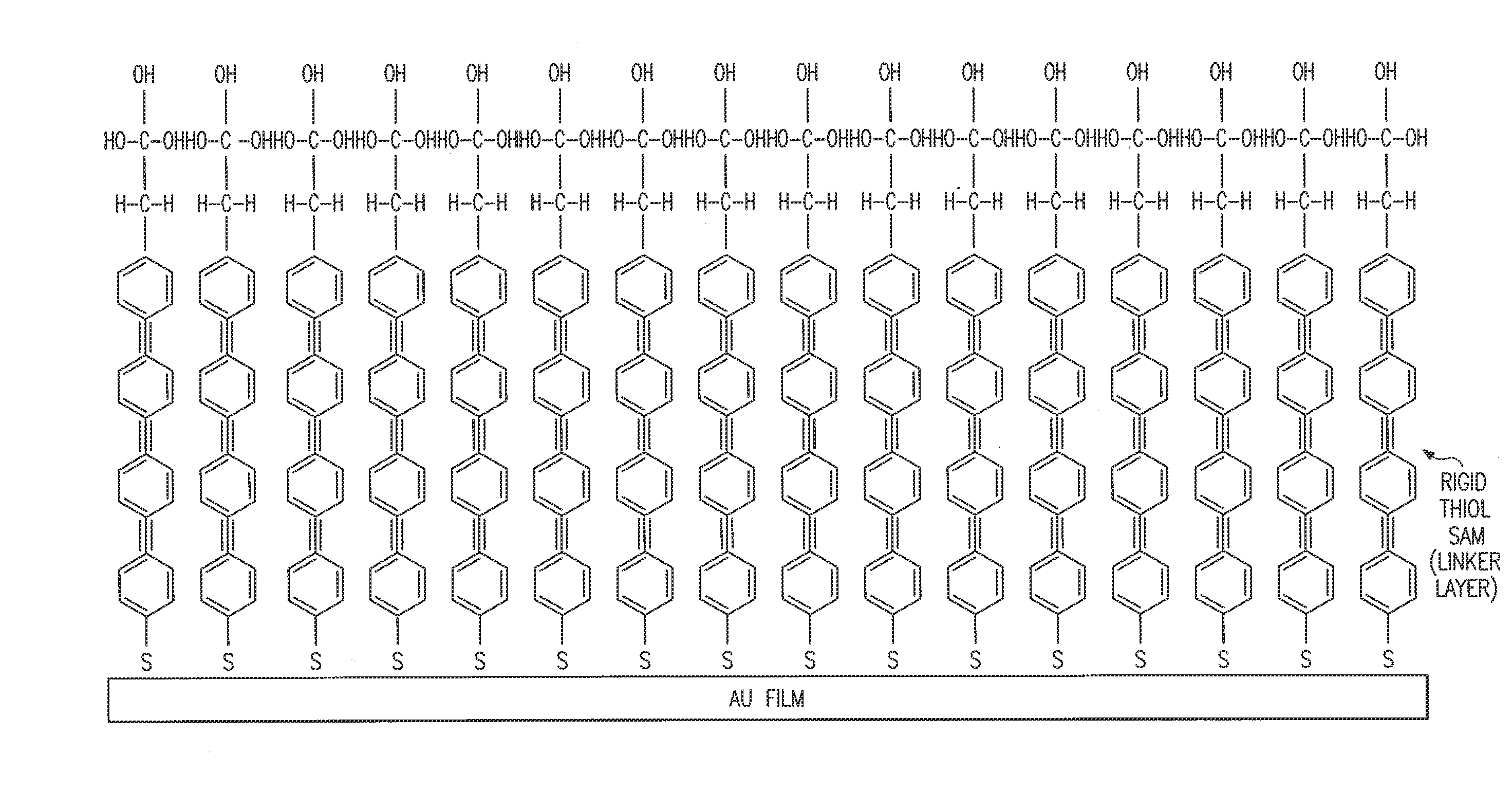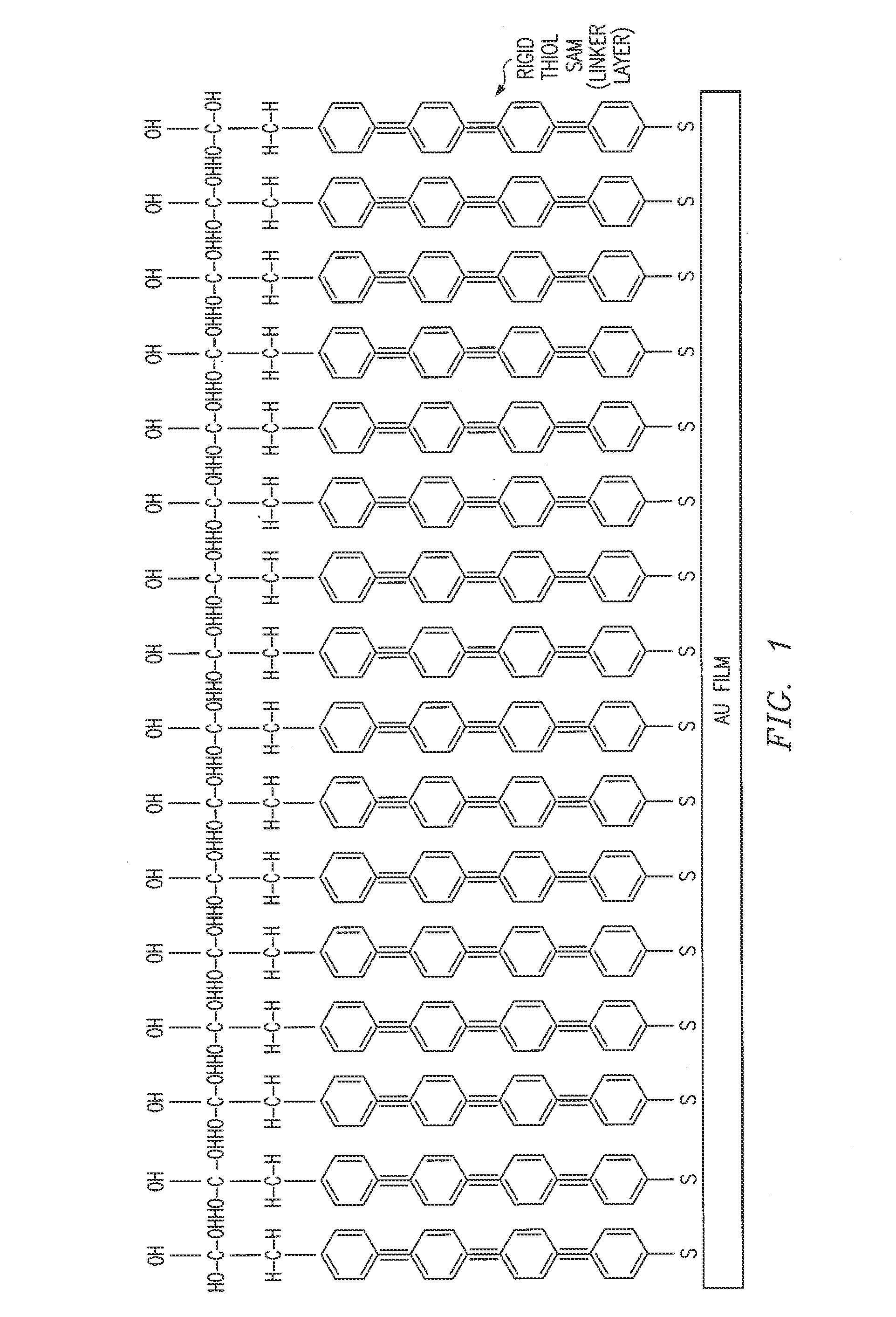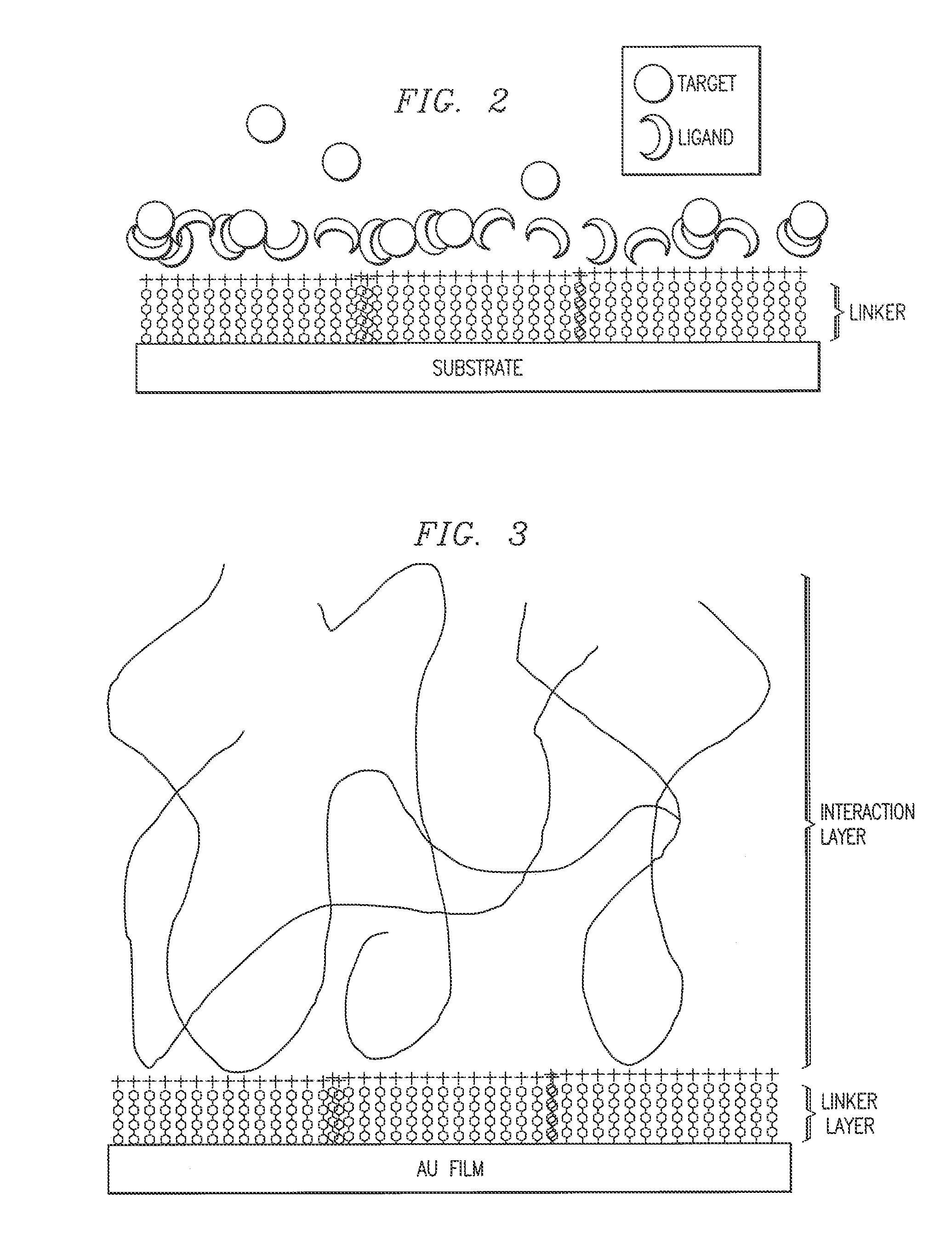Biosensor and method
a biosensor and surface plasmon technology, applied in the field of biochemical sensors, can solve the problems of high cost, high cost, and high cost of ligand immobilization, and achieve the effect of increasing the ease and/or sensitivity of spr sensor detection
- Summary
- Abstract
- Description
- Claims
- Application Information
AI Technical Summary
Benefits of technology
Problems solved by technology
Method used
Image
Examples
example 1
[0046]Activation of a hydrogel using N,N′-Carbonyl diimidazole (CDI) causes cross-linking of hydroxyls that in close proximity via an active imidazole carbonate. The activated surface is expose to a protein solution (0.1 mg / ml in phosphate buffer, pH 8.0) resulting in entrapment of protein molecules in the cross-linked hydrogel mesh. The active carbonate linkage reacts with the primary amines of the protein resulting in covalent coupling of the protein. Any remaining imidazole carbonates are inactivated using 1 M ethanolamine, pH 8.5. It is important to limit the contact time of the protein with the active surface to prevent excessive linkages with the hydrogel from forming.
example 2
[0047]The substitution of the amino acid histidine into a dextran hydrogel already having coupling groups introduces both amidazole and carboxyl groups. Then exposing the hydrogel to a buffer of pH6.2.
example 3
[0048]The coupling groups may be carboxymethyl and the reversible cross-linking employs phenyl bis(boronic acid). This reagent interacts with adjacent hydroxyls on a hydrogel for pH in the range 8 to 9, thereby cross-linking any hydrogel possessing a cis-diol (e.g. dextran). After ligand entrapment and immobilization, the cross-linking interaction is reversed at pH in the range 3 to 4.
PUM
| Property | Measurement | Unit |
|---|---|---|
| wavelength | aaaaa | aaaaa |
| wavelength | aaaaa | aaaaa |
| molecular weight | aaaaa | aaaaa |
Abstract
Description
Claims
Application Information
 Login to View More
Login to View More - R&D
- Intellectual Property
- Life Sciences
- Materials
- Tech Scout
- Unparalleled Data Quality
- Higher Quality Content
- 60% Fewer Hallucinations
Browse by: Latest US Patents, China's latest patents, Technical Efficacy Thesaurus, Application Domain, Technology Topic, Popular Technical Reports.
© 2025 PatSnap. All rights reserved.Legal|Privacy policy|Modern Slavery Act Transparency Statement|Sitemap|About US| Contact US: help@patsnap.com



